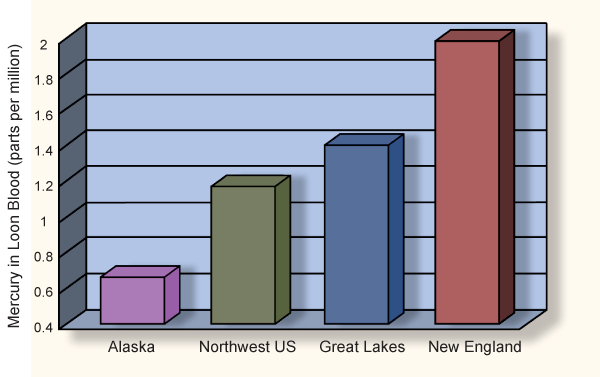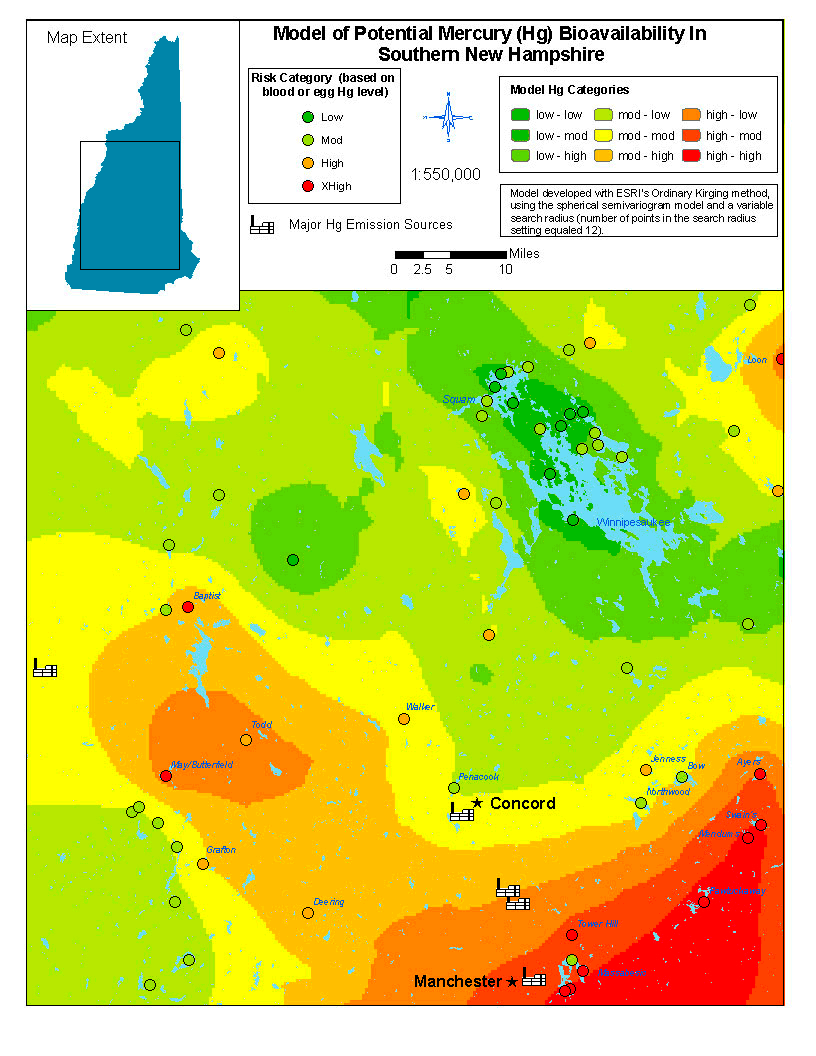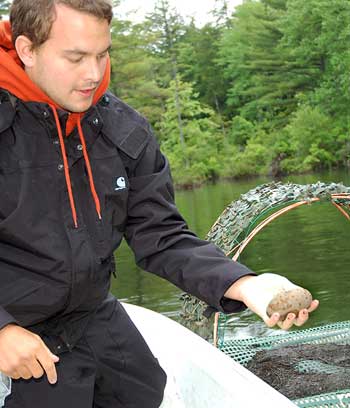Mercury
Mercury is a heavy metal that occurs naturally in our environment, but has increased to unnaturally high levels as a result of human activities. Mercury enters our atmosphere when coal or other fossil fuels are burned to generate power, or when mercury-containing products like thermometers, batteries, electrical switches, and fluorescent light bulbs are incinerated. Bacteria in lake sediments convert the mercury into methylmercury, a biologically active form that bioaccumulates and biomagnifies in wildlife and in humans.
Mercury is an extremely potent neurotoxin and can reach toxic levels in loons and in other long-lived, fish-eating animals. Research done by LPC and BioDiversity Research Institute has shown that loons in New Hampshire have among the highest concentrations of mercury recorded in loons anywhere in North America.
Over half of the loon eggs tested in New Hampshire were found to have mercury concentrations over 0.5 parts per million (ppm), a level high enough to potentially affect reproductive success, and 10% of eggs were found to have levels of 1.3 parts per million or greater, considered to be a lethal dose for loon embryos. Eighteen percent of adult loons tested were found to have blood mercury levels above 3 ppm, the established risk threshold for adults. Adult loons with high mercury levels demonstrate abnormal behaviors that limit their ability to defend a territory and raise young.
Mercury poses a hazard to the environment and to human health as well as to loons, and atmospherically distributed mercury has become a regional and national concern. Mercury in New Hampshire’s fish has resulted in fish consumption advisories on lakes throughout the state.
These advisories suggest limiting the consumption of freshwater fish to one meal per month for children and women of childbearing age, and to no more than four meals of fish per month for all others.
Data collected by LPC and the BioDiversity Research Institute on mercury in loon eggs, blood and feathers have revealed “hot spots,” concentrations of mercury that are dangerous for loons and people, downwind of major emission sources like coal-fired power plants and incinerators. LPC’s banding activities and yearly monitoring of the health and reproductive success of banded loons are helping to identify these areas of potentially dangerous concentrations of mercury in New Hampshire.
This work is an important first step in reducing mercury in our environment to benefit loons, other wildlife, and people.
Other Contaminants
Recent and ongoing research by the Loon Preservation Committee (see the Squam Lake Loon Study) has revealed high concentrations of several contaminants in loon eggs, including PBDE (polybrominated diphenyl ethers), used as flame retardants in a wide variety of consumer products including couches, carpets, mattresses, and electronic equipment; PFOS (perfluorooctanesulfonate), used in stain repellents, cleaning agents, floor polish and fire-fighting foam; and PCDDs (polychlorinated dibenzo-dioxins) and PCDFs (polychlorinated dibenzo-furans), formed as by-products of combustion of fuels and wastes, metallurgical processing, and pulp and paper processing.
Few laboratory studies on the effects of contaminants have been conducted on loons because of the difficulty in keeping loons alive in captivity. However, these and other contaminants are present in loons in concentrations that have been shown to affect the health and/or reproductive success of other bird species. Within the next year, LPC will be releasing a comprehensive report on these contaminants and their effects on loons as part of its Squam Lake Loon Study.




